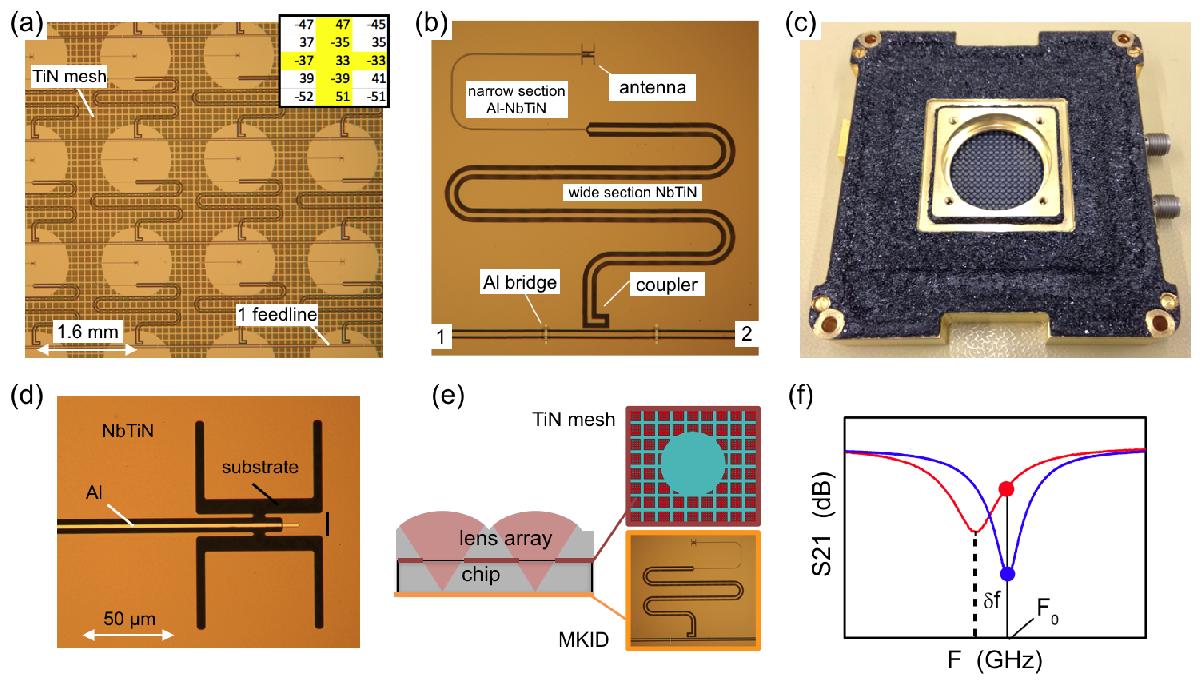Fig. 1

a) Photograph of a section of the chip, taken from the backside of the wafer where the lens array will be mounted, showing the MKIDs seen through the sapphire substrate. Also visible is the TiN mesh layer, with the holes to allow the antenna beams to couple efficiently to the lenses. Note that all meandering resonators have a slightly different length to allow them to be read out at different frequencies. b) Zoom-in on a single MKID detector, photographed from the front side of the chip. We see the NbTiN layer and the lithographic bridges used to balance the feedline ground planes. c) Photograph of the chip-lens array assembly in its holder, with the lens array clearly visible. In operation we place a polariser and set of bandpass filters on the circular aperture and mount the assembly inside the light-tight box of the cryostat, which is cooled to 120 mK. As a result we can only illuminate a fraction of the pixels of the array. d) A zoom-in of panel b) showing the antenna at the shorted end of the MKID resonator. e) Schematic diagram of the cross section of the assembled detector array with lens array, chip and the positions of the MKIDs and the TiN mesh stray-light absorbing layer. f) The transmission of the feedline around a single MKID measured from contact 1 to 2 in panel b). The MKID traces a resonance dip which changes upon radiation absorption: the blue line is the equilibrium case, and the red curve corresponds to the MKID absorbing radiation. The two dots indicate the change in response of the forward scattering parameter (S21) when reading out the device with a readout tone at F0.
Current usage metrics show cumulative count of Article Views (full-text article views including HTML views, PDF and ePub downloads, according to the available data) and Abstracts Views on Vision4Press platform.
Data correspond to usage on the plateform after 2015. The current usage metrics is available 48-96 hours after online publication and is updated daily on week days.
Initial download of the metrics may take a while.


